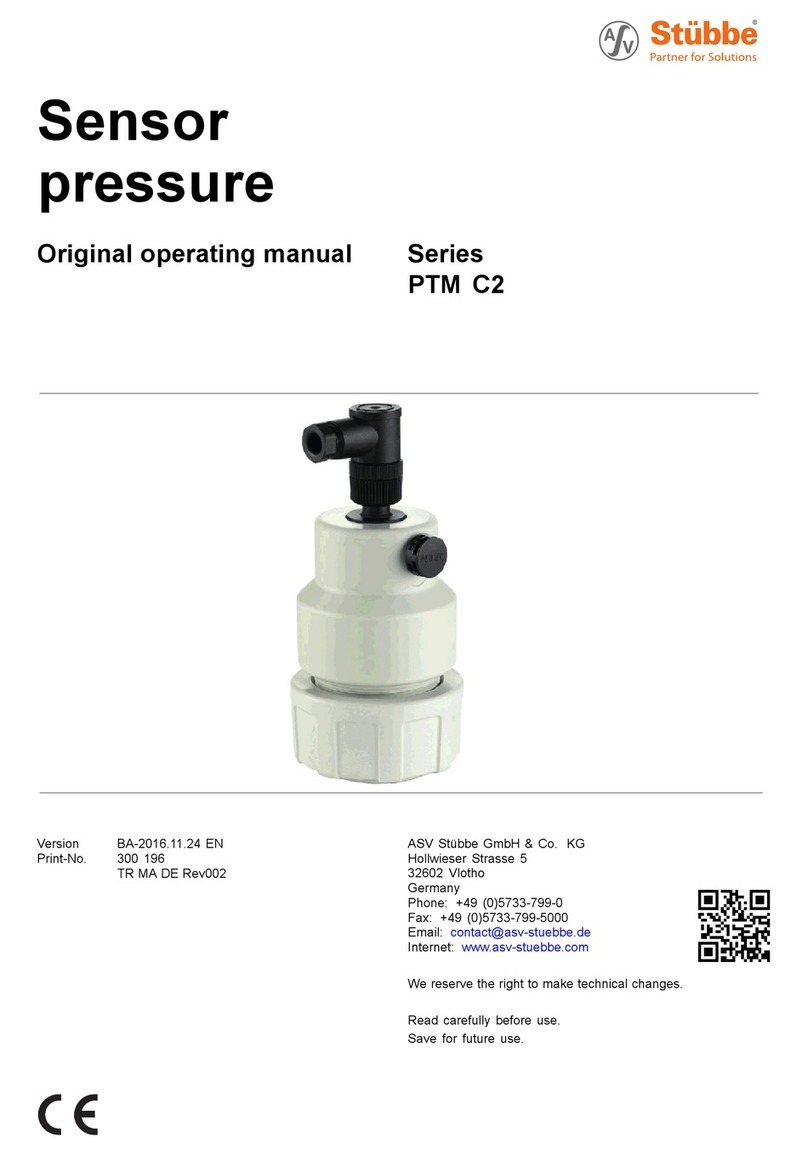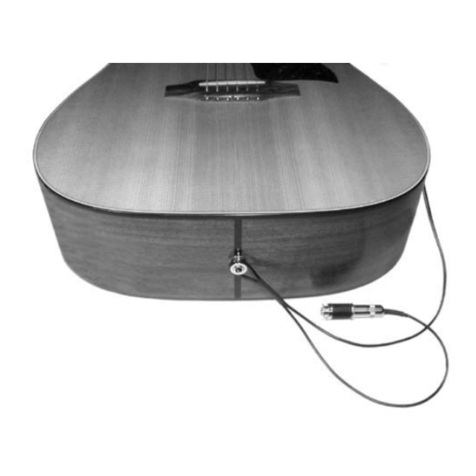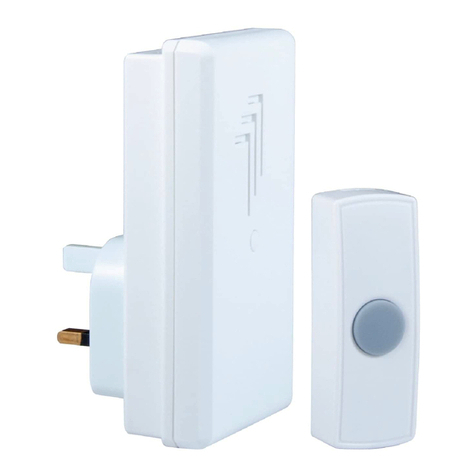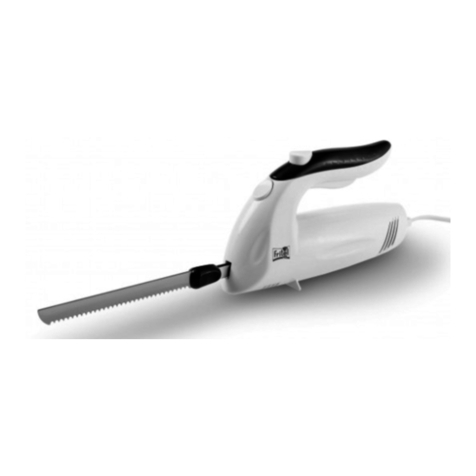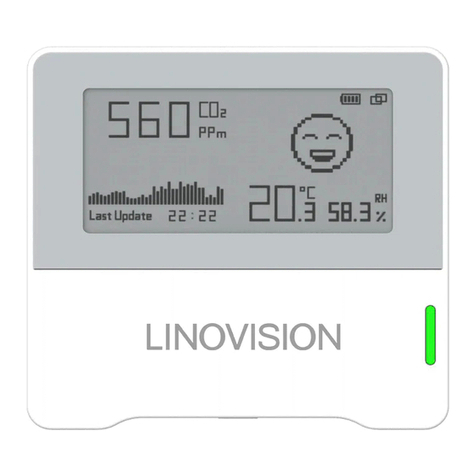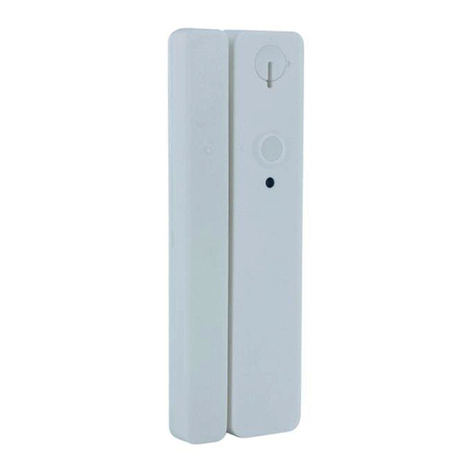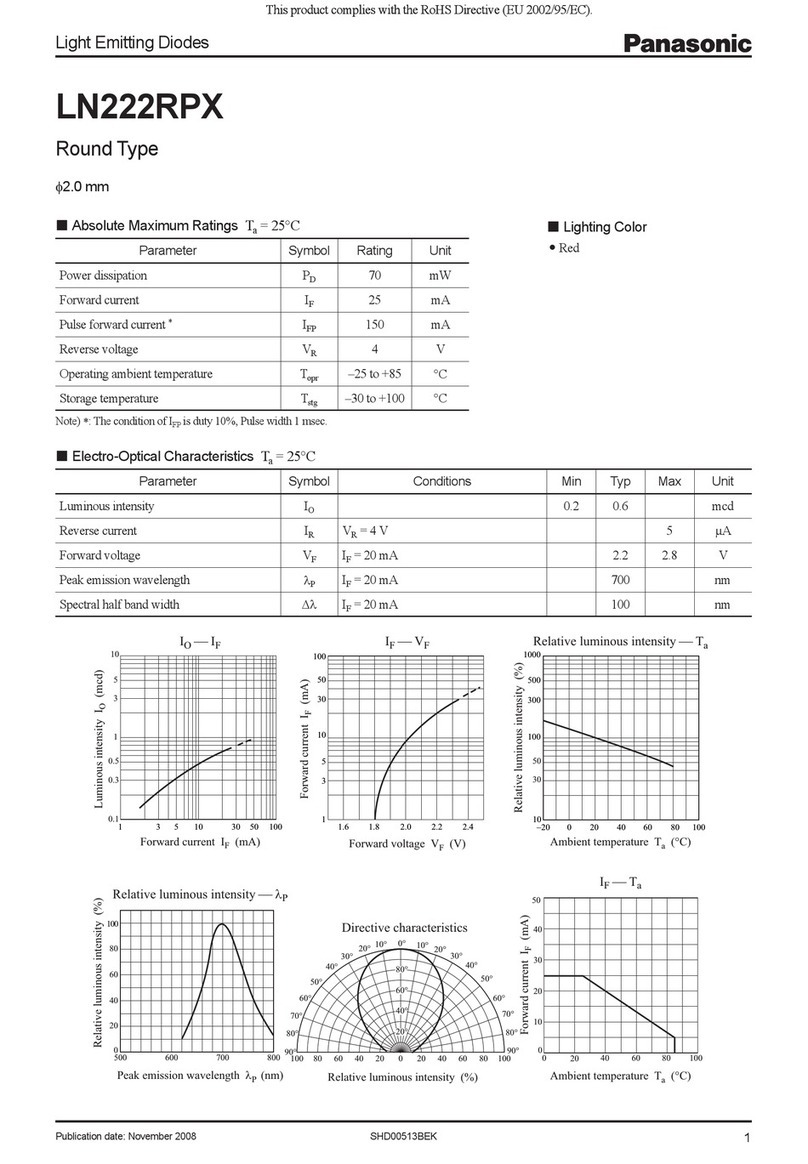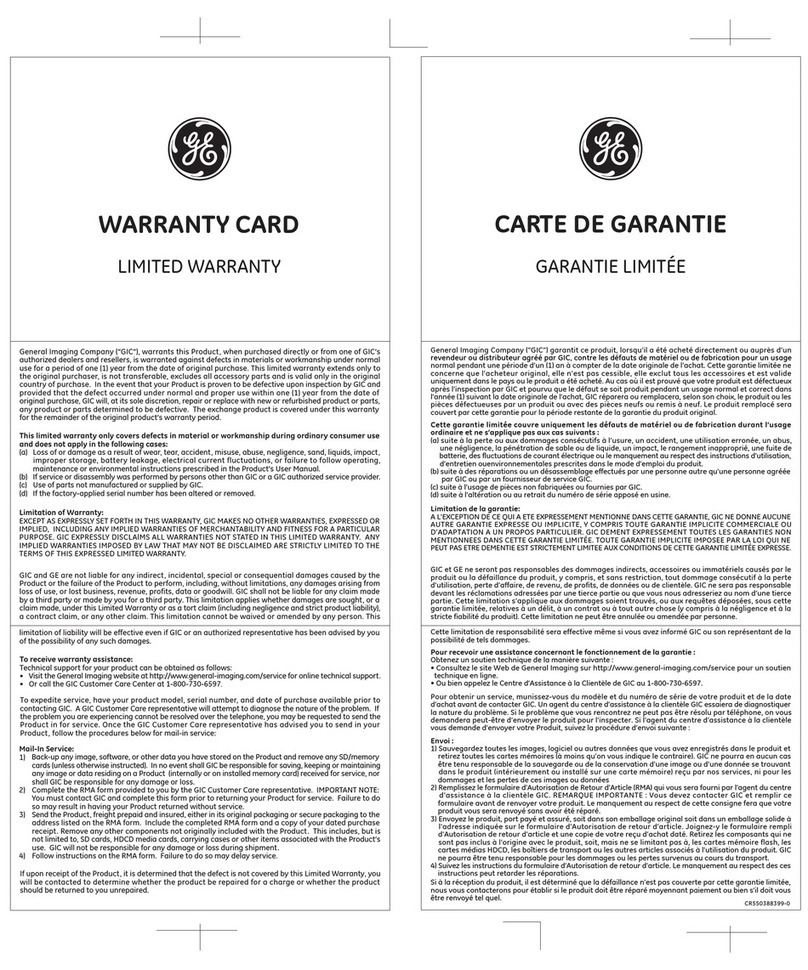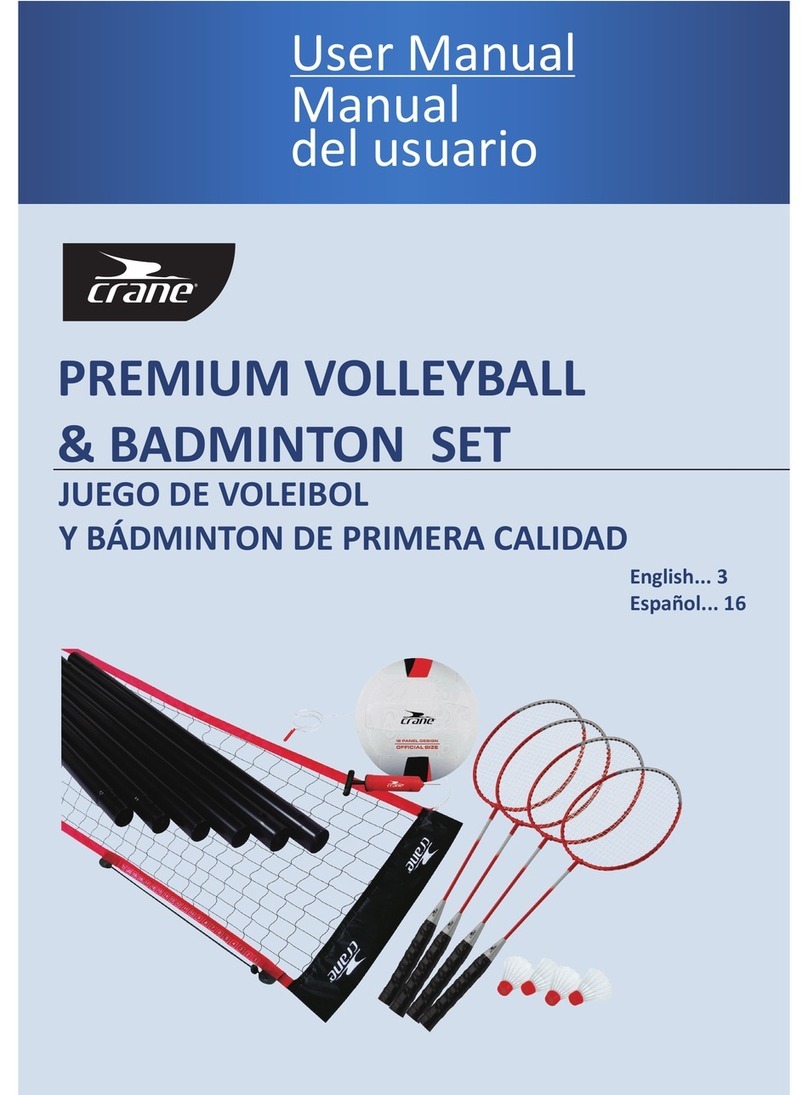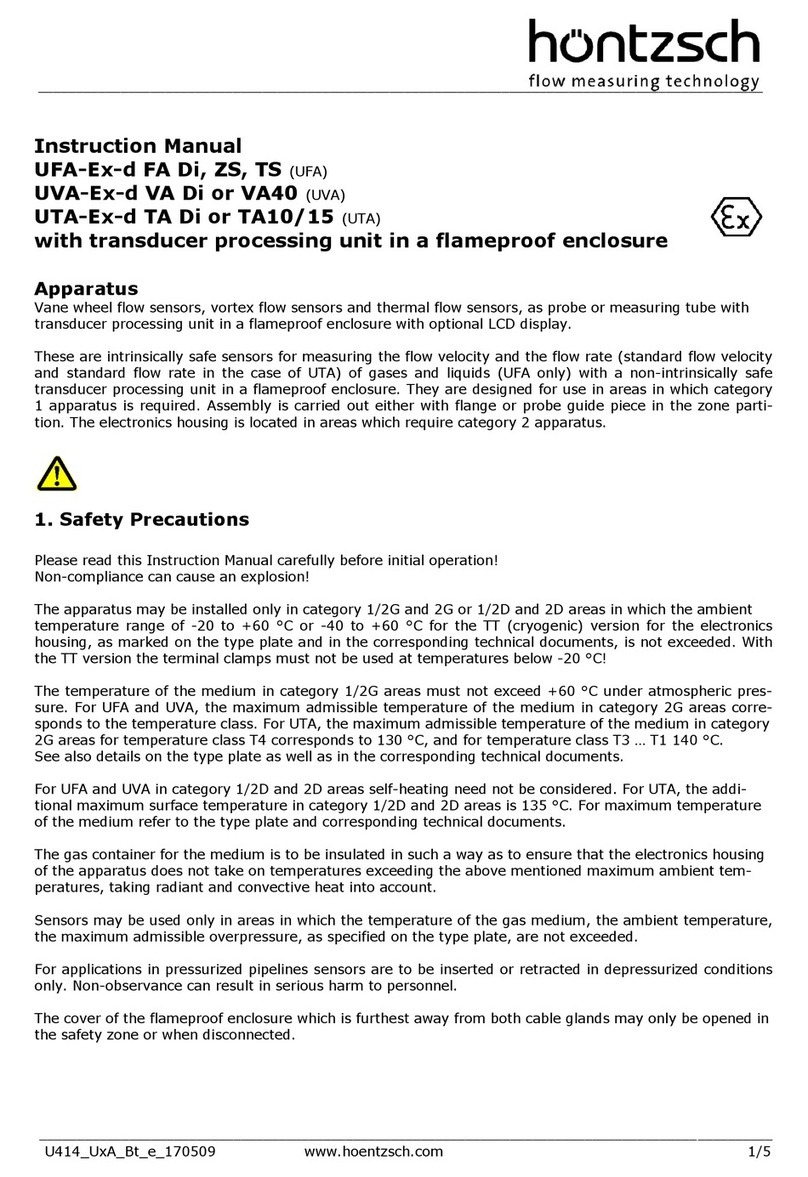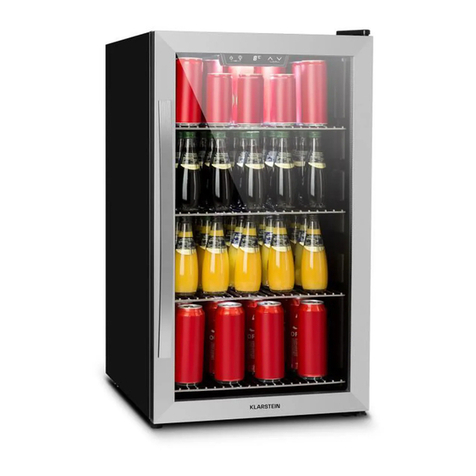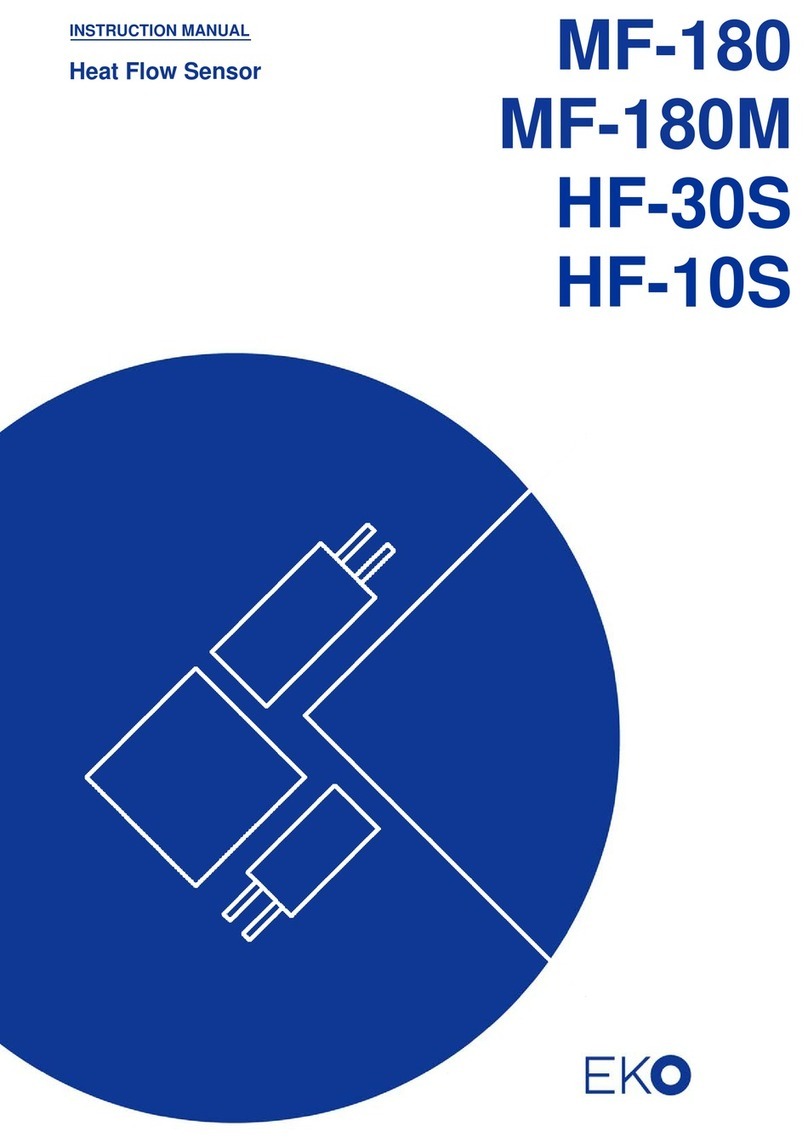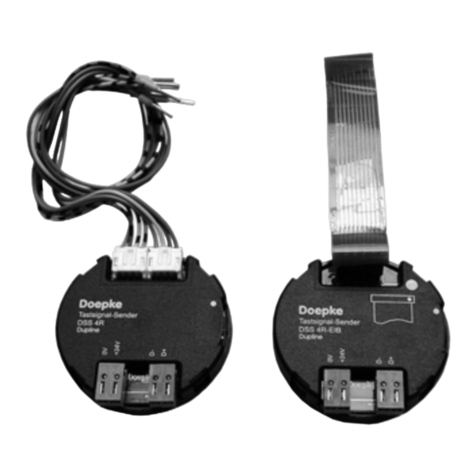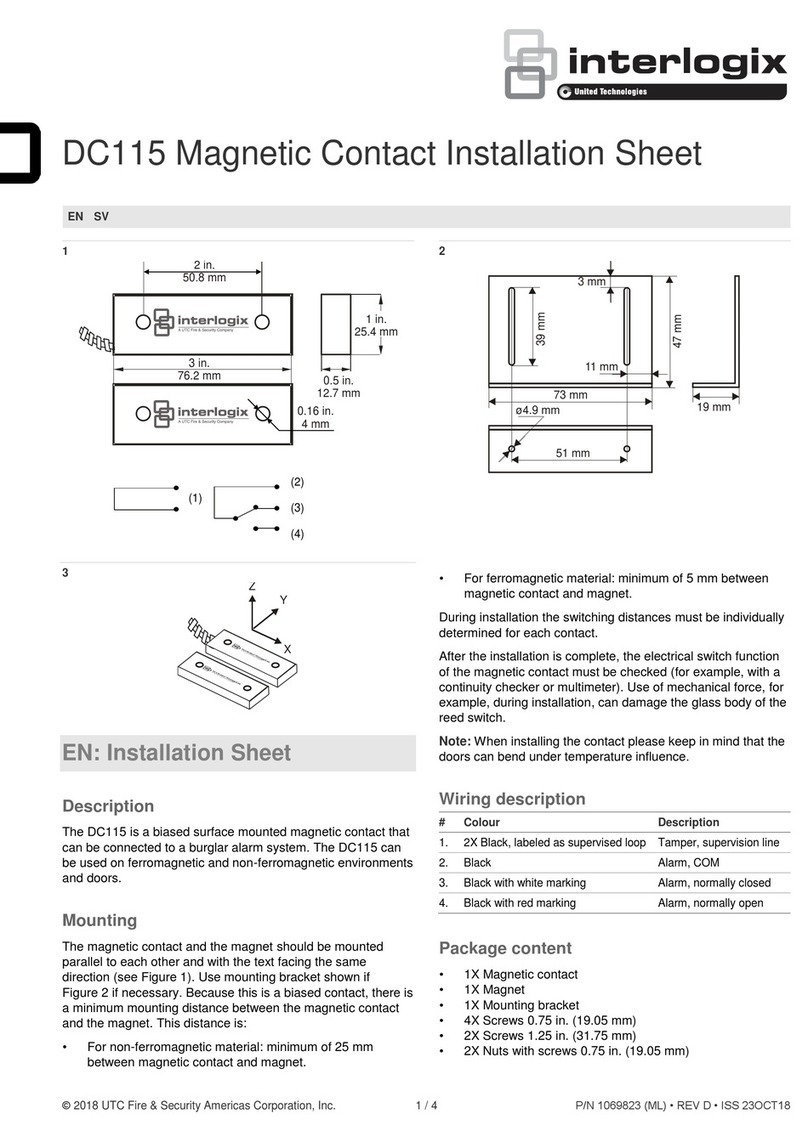Stübbe HFT C2 Compact Installation instructions

Hydrostatic filling
level sensor
Original operating manual Pump series
HFT C2 Compact,
HFT C2 Flex (hanging sensor)
Version BA-2017.06.01 EN
Print-No. 301 155
MA DE Rev001
ASV Stübbe GmbH & Co. KG
Hollwieser Straße 5
32602 Vlotho
Germany
Phone: +49 (0) 5733-799-0
Fax: +49 (0) 5733-799-5000
E-mail: [email protected]
Internet: www.asv-stuebbe.com
We reserve the right to make
technical changes.
Read carefully before use.
Save for future use.

Table of contents
Table of contents
1 About this document ............................... 3
1.1 Target groups ................................. 3
1.2 Other applicable documents ................ 3
1.3 Warnings and symbols ....................... 3
2 General safety instructions ....................... 4
2.1 Intended use .................................. 4
2.2 General safety instructions .................. 4
2.2.1 Obligations of the operating company . .... . 4
2.2.2 Obligations of personnel ..................... 4
2.3 Specific hazards .............................. 4
2.3.1 Hazardous media ............................ 4
3 Layout and Function ............................... 5
3.1 Type plate ..................................... 5
3.2 Description .................................... 5
3.3 Layout ......................................... 5
3.3.1 Layout ......................................... 5
4 Transport, Storage and Disposal ................. 6
4.1 Unpacking and inspection on delivery . . . . . . 6
4.2 Transportation ................................ 6
4.3 Storage ....................................... 6
4.4 Disposal ....................................... 6
5 Installation and connection ....................... 6
5.1 Check operating conditions ................. 6
5.2 Install device .................................. 6
5.2.1 Installing Compact version .................. 6
5.2.2 Installing Flex version ........................ 7
5.3 Perform the hydrostatic test (only
Compact) ..................................... 7
5.4 Electrical connection of device .............. 7
5.4.1 Electrical connection of Compact
version ........................................ 7
5.4.2 Electrical connection of Flex version .. . . . . . 7
6Operation ............................................ 8
6.1 Initial start-up ................................. 8
7 Maintenance ......................................... 8
7.1 Servicing ...................................... 8
7.2 Maintenance .................................. 8
7.2.1 Removing the device ........................ 8
7.2.2 Replacement parts and return .............. 8
8 Troubleshooting .................................... 8
9 Appendix ............................................. 9
9.1 Technical specifications ...................... 9
9.2 Dimensions ................................... 9
9.3 Accessories ................................... 9
9.4 Plug assignment ............................. 9
9.5 Sensor cable ................................. 9
List of figures
Fig. 1 Type plate ..................................... 5
Fig. 2 HFT-C2 Compact layout ..................... 5
Fig. 3 HFT-C2 Flex layout .......................... 5
Fig. 4 Connection diagram ......................... 9
Fig. 5 Sensor cable ................................. 9
List of tables
Tab. 1 Other application documents, purpose and
where found .................................. 3
Tab. 2 Warnings and symbols ....................... 3
Tab. 3 Explanation of the formulaic symbol .. . . . . . . 5
Tab. 4 Servicing activities ........................... 8
Tab. 5 Troubleshooting .............................. 8
Tab. 6 Accessories ................................... 9
2 HFT C2 BA-2017.06.01 EN 301 155

About this document
1 About this document
This manual
• is part of the equipment
• applies to all series referred to
• describes safe and proper operation during all operating
phases
1.1 Target groups
Operating company
• Responsibilities:
– Always keep this manual accessible where the device
is used on the system.
– Ensure that employees read and observe this docu-
ment, particularly the safety instructions and warnings,
and the documents which also apply.
– Observe any additional country-specific rules and reg-
ulations that relate to the system.
Qualified personnel, fitter
• Mechanics qualification:
– Qualified employees with additional training for fitting
the respective pipework.
• Electrical qualification:
– Qualified electrician
• Transport qualification:
– Qualified transport specialist
• Responsibility:
– Read, observe and follow this manual and the other
applicable documents, especially all safety instructions
and warnings.
1.2 Other applicable documents
To download:
Resistance lists
Resistance of materials used to
chemicals
www.asv-stuebbe.de/pdf_resistance/300051.pdf
To download:
Data sheet
Technical specifications, conditions of
operation
www.asv-stuebbe.de/pdf_datasheets/301149.pdf
To download:
CE declaration of conformity
Conformity with standards
www.asv-stuebbe.de/pdf_DOC/301192.pdf
Tab. 1 Other application documents, purpose
and where found
1.3 Warnings and symbols
Symbol Meaning
• Immediate acute risk
• Death, serious bodily harm
• Potentially acute risk
• Death, serious bodily harm
• Potentially hazardous situation
• Minor injury
• Potentially hazardous situation
• Material damage
Safety warning sign
Take note of all information
highlighted by the safety warning
sign and follow the instructions to
avoid injury or death.
Instruction
1., 2., ... Multiple-step instructions
Precondition
→Cross reference
Information, notes
Tab. 2 Warnings and symbols
301 155 BA-2017.06.01 EN HFT C2 3

General safety instructions
2 General safety instructions
The manufacturer accepts no liability for damages caused
by disregarding any of the documentation.
2.1 Intended use
The device measures the hydrostatic pressure of a liquid
medium.
• Device must only be used for measuring the filling level in
liquid media.
• Only use the device with suitable media (→resistance
lists).
• Adhere to the operating limits (→9.1 Technical specifica-
tions, Page 9).
2.2 General safety instructions
Observe the following regulations before carrying out any
work.
2.2.1 Obligations of the operating company
Safety-conscious operation
• Only operate the device if it is in perfect technical condition
and only use it as intended, staying aware of safety and
risks, and in adherence to the instructions in this manual.
• Ensure that the following safety aspects are observed and
monitored:
– Intended use
– Statutory or other safety and accident-prevention reg-
ulations
– Safety regulations governing the handling of haz-
ardous substances
– Applicable standards and guidelines in the country
where the pump is operated
• Make personal protective equipment available.
Qualified personnel
• Make sure all personnel tasked with work on the device
have read and understood this manual and all other appli-
cable documents, especially the safety, maintenance and
repair information, before they start any work.
• Organize responsibilities, areas of competence and the
supervision of personnel.
• The following work should be carried out by specialist tech-
nicians only:
– Installation, repair and maintenance work
– Work on the electrical system
• Make sure that trainee personnel only work on the device
under supervision of specialist technicians.
2.2.2 Obligations of personnel
Only complete work on the device if the following requirements
are met:
• System is empty
• System has been flushed
• System is depressurized
• System has cooled down
• System is secured against being switched back on again
• Do not make any modifications to the device.
2.3 Specific hazards
2.3.1 Hazardous media
• When handling hazardous media, observe the safety reg-
ulations for the handling of hazardous substances.
• Use personal protective equipment when carrying out any
work on the device.
• Collect leaking pumped liquid and residues in a safe man-
ner and dispose of in accordance with environmental reg-
ulations.
4 HFT C2 BA-2017.06.01 EN 301 155

Layout and Function
3 Layout and Function
3.1 Type plate
HFT–C2
Füllstandssensor
Messbereich 0-0,5 bar
4-20mA 2-Leiter Id.No.
140557
Anschluss DN25
M
Tankmontage
aterial PVC-U / PP/ PVDF
7m FEP-Kabel
1304-05371
1
2
3
4
6
5
7
9-35 V DC
Fig. 1 Type plate
1Devicetype
2 Filling level measurement range (hydrostatic pressure)
3Outlet
4 Connection
5 Gasket material
6 Installation cable
7 ID number
Device types
• HFT–C2 – Compact, current output
• HFT–C2 – Flex, current output
3.2 Description
The device measures the filling level of a liquid medium. It
transmits the measured value via a current output.
To calculate the filling height, use the following formula:
p(h) = ρ*g*h
Formu-
laic
symbol
Meaning
p(h) Hydrostatic pressure as a function of the liquid
column
ρDensity (for example of water: 998.2 kg/m³ at
20 °C); [ρ]=kg/m³
gLocation factor (gravitational acceleration,
gnorm = 9.80665 m/s²); [g] = m/s²
hHeight of liquid column; [h] = m
Tab. 3 Explanation of the formulaic symbol
3.3 Layout
3.3.1 Layout
1
2
3
Fig. 2 HFT-C2 Compact layout
1 4-pole plug M12
2 Sensor housing
3 Process connection
1
2
3
Fig. 3 HFT-C2 Flex layout
1 FEP cable
2 Sensor housing
3Protectioncap
301 155 BA-2017.06.01 EN HFT C2 5

Installation and connection
4 Transport, Storage and
Disposal
4.1 Unpacking and inspection on delivery
1. Unpack the device when received and inspect it for trans-
port damage and completeness.
2. Check that the information on the type plate agrees with
the order/design data.
3. Report any transport damage to the manufacturer immedi-
ately.
4. If fitted immediately: Dispose of packaging material
according to local regulations.
–Iffitted at a later point: leave device in its original pack-
aging.
4.2 Transportation
Device should preferably be transported in the original
packaging.
4.3 Storage
NOTE
Material damage due to inappropriate storage!
Store the device properly.
1. Make sure the storage room meets the following condi-
tions:
–Dry
– Frost-free
– Vibration-free
– Not in direct sunlight
– Storage temperature +10 °C to +60 °C
2. Device should preferably be stored in the original packag-
ing.
4.4 Disposal
Plastic parts can be contaminated by poisonous or radioac-
tive media to such an extent that cleaning will not be suffi-
cient.
WARNING
Risk of poisoning and environmental damage from
medium.
Use personal protective equipment when carrying out any
work on the device.
Prior to the disposal of the device: Neutralize residues of
medium in the device.
1. Remove battery and dispose of in accordance with local
regulations.
2. Remove electronic parts and dispose of in accordance with
local regulations.
3. Dispose of plastic parts in accordance with local regula-
tions.
5 Installation and connection
5.1 Check operating conditions
1. Ensure the required operating conditions are met:
– Resistance of body and seal material to the medium
(→resistance lists).
– Media temperature (→9.1 Technical specifications,
Page 9).
– Working pressure (→9.1 Technical specifications,
Page 9).
2. Consult with the manufacturer regarding any other use of
the device.
5.2 Install device
5.2.1 Installing Compact version
Process pipework has been properly prepared.
Process pipework has been secured against unintentional
opening with shut-off values.
Avoidance of medium buildup.
Select installation location so that no build-up or crystalliza-
tion is possible.
WARNING
Risk of injury and poisoning due to medium spraying out.
Use personal protective equipment when carrying out any
work on the fitting.
1. Unscrew union nut.
2. Insert union nut on to the spool piece of the process
pipework.
Check mounting direction.
3. Weld device insert to the process pipework spool piece.
4. Check O-ring fitting.
5. Connect device to the process pipework. Tighten union nut
by hand only.
6 HFT C2 BA-2017.06.01 EN 301 155

Installation and connection
5.2.2 Installing Flex version
Tank has been properly prepared.
Avoidance of medium buildup.
Select installation location so that no build-up or crystalliza-
tion is possible.
Lateral movements of sensors lead to measurement errors.
Fit protection tube or use additional weight if necessary
Select installation location so that no build-up or crystalliza-
tion is possible.
WARNING
Risk of injury and poisoning due to medium spraying out.
Use personal protective equipment when carrying out any
work on the fitting.
1. Insert the sensor into the tank at the top.
2. Lower the sensor to the bottom of the tank.
3. Screw the cable gland tight.
5.3 Perform the hydrostatic test
(only Compact)
Perform hydrostatic test using neutral medium, e.g. water.
1. Pressurize the device, ensuring
– Test pressure < 1.5 x PN(Nominal pressure)
– Test pressure < PN+5bar
– Test pressure < permissible system pressure
2. Check that the device is not leaking.
5.4 Electrical connection of device
5.4.1 Electrical connection of Compact version
Device is connected to the process pipework.
Power supply switched off and secured against being
switched back on again.
Cable without shielding can be used to connect the device.
If electromagnetic interference is anticipated, then shielded
cablemustbeused.
1. Cut sensor cable to length.
2. Fit plug (→9.4 Plug assignment, Page 9).
3. Connect sensor housing with sensor cable.
5.4.2 Electrical connection of Flex version
Device is installed in the tank.
Power supply switched off and secured against being
switched back on again.
Cable without shielding can be used to connect the device.
If electromagnetic interference is anticipated, then shielded
cablemustbeused.
1. Connect the sensor cable.
The sensor cable is prepared and can be connected to the
cable extension with the supplied crimp connectors.
2. Insert the wire ends into the single wire connectors. Ensure
that the wire ends are not stripped.
3. Close the single wire connectors.
4. Crimp the single wire connectors (→9.5 Sensor cable,
Page 9). Use combination pliers if necessary.
– The capillary tube must not be closed.
301 155 BA-2017.06.01 EN HFT C2 7

Troubleshooting
6Operation
6.1 Initial start-up
Device is connected properly to the process pipework.
Device is connected properly with the power supply and
ready for operation.
For this purpose, the current output for filling level must
be displayed in the higher-level controller as a measured
value.
After starting the higher-level controller, the device trans-
mits the filling level as current signal (4 … 20 mA).
7 Maintenance
WARNING
Risk of injury and poisoning due to hazardous or hot
media.
Use personal protective equipment when carrying out any
work on the device.
Allow device to cool.
Make sure the device is depressurized.
Block the media supply to the device.
Empty the process pipework, safely collect the media and
dispose of it in accordance with environmental regulations.
Switch off the power supply to the system.
Secure power supply against being switched back on
again.
Provide warning of maintenance and repair work and set
up warning signs.
7.1 Servicing
Interval Action
As necessary • Clean device with a damp cloth.
Six-monthly Visual and function check:
• Normal operating conditions
unchanged
• No leaks
• No unusual operating noises or
vibrations
Tab. 4 Servicing activities
Perform maintenance tasks according to the table.
7.2 Maintenance
7.2.1 Removing the device
System is empty.
System has been flushed.
System is depressurized.
System has cooled down.
System is secured against being switched back on again.
1. Unplug connection cable.
2. Disassemble device from the process pipework. For the
Flex version: Pull the sensor out of the tank.
3. Decontaminate device if required.
7.2.2 Replacement parts and return
1. Have the following information ready to hand when order-
ing spare parts (→3.1 Type plate, Page 5).
–Devicetype
– ID number
– Nominal pressure and diameter
– Connection and gasket material
2. Please complete and enclose the document of compliance
for returns (→www.asv-stuebbe.com/service/downloads).
3. Only use spare parts from ASV Stübbe.
8 Troubleshooting
WARNING
Risk of injury and poisoning due to hazardous media liq-
uids!
Use personal protective equipment when carrying out any
work on the device.
Error Possible cause Corrective action
Medium leaks
outatscrew
connection
Pre-tension of the
O-ring too small
Retighten
union nut by
hand.
Tab. 5 Troubleshooting
8 HFT C2 BA-2017.06.01 EN 301 155

Appendix
9 Appendix
9.1 Technical specifications
Technical data (→Data sheet).
9.2 Dimensions
Dimensions (→Data sheet).
9.3 Accessories
Description Ident. number
Tank lead-through 2" PP EPDM 148157
Tank lead-through 2" PP FPM 148158
Tank lead-through 2" PVDF EPDM 148149
Tank lead-through 2" PVDF FPM 148150
Tab. 6 Accessories
9.4 Plug assignment
2
34
1
Fig. 4 Connection diagram
1 Signal (+), 4...20 mA
2 Signal (-), 4...20 mA
3n.c.
4n.c.
9.5 Sensor cable
1
2
3
Fig. 5 Sensor cable
1 Capillary tube
2 Signal (+), brown wire
3 Signal (–), white wire
301 155 BA-2017.06.01 EN HFT C2 9
This manual suits for next models
1
Table of contents
Other Stübbe Accessories manuals
